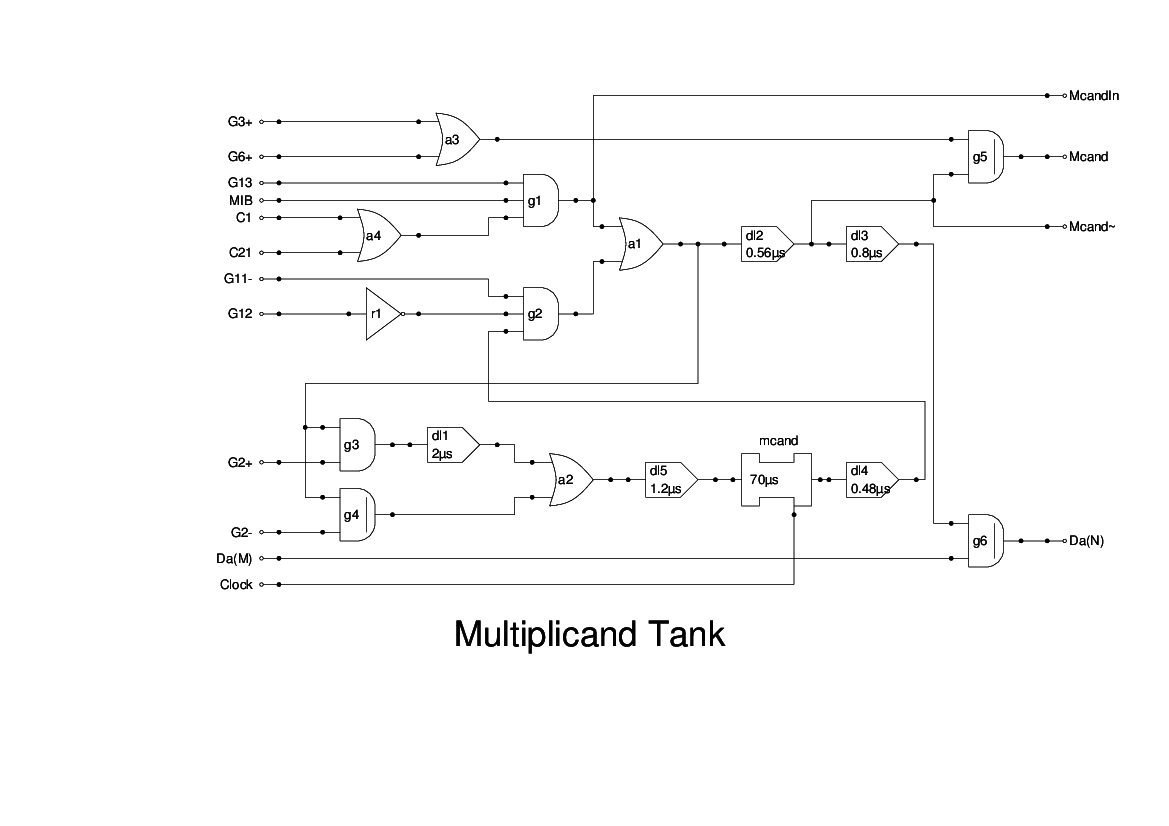Accumulator Shifting Unit 2
Accumulator
Main Adder
Computer Control I
Computer Control X
Computer Control II
Computer Control III
Computer Control IV
Computer Control V
Computer Control VI
Computer Control VII
Computer Control VIII
Computer Control IX
Coincidence Unit
Clock Generator
Complementer/Collater
Control Switches and Logic
Counter
Digit Pulse Generators
Engineers Control Panel
Frigs
Half Adder Type 1
Half Adder Type 2
Main Control Unit
Multiplicand Tank
Memory Units
Multiplier Tank
Order Coder
Order Decoder 1
Order Decoder 2
Order Flashing Unit
Order Tank
Printer
Sequence Control Tank
Initial Orders Loader
Timing Control Tank
Tank Address Decoder 0
Tank Address Decoder 1
Tank Address Distribution
Tank Address Flashing Units
Tank Address Decoding Final Stage
Tape Reader
Test Frigs
Transfer Unit

The Multiplicand Tank is a full word (36 bit) delay line with typical recirculation logic, but including an extra delay of 1PI. This enables the multiplicand to be shifted left by one bit every other Minor Cycle, and hence to be added into the partial product.
The Multiplicand Tank is used as the main input to the arithmetic section of the machine. It is loaded from the MIB during Stage 2, and when C1 is set, indicating an operation that requires a number to be loaded from memory.
The signal G12, via an inverter, is used to close off the recirculation during Stage 1, but it is unclear as to whether this was necessary in the original machine.
The output from the tank is gated by either G3+ or G6+ which are produced by CCU Panel 7 (multiplication) and CCU Panel 4 (addition, subtraction, collation) respectively. The shifting action is only relevant to multiplication and is switched using the signals G2+ and G2- which are produced by the Timing Control Tank.
The CCU Panel 2 which initiates multiplication requires an indication of non-zero bits in the multiplicand. This is provided by the signal McandIn which simply derives from the input to the tank. The additional output Mcand~ is provided for monitoring purposes only and is not essential to the replica.
The Report contains only a brief textual description of this unit, and so the design is purely conjectural.